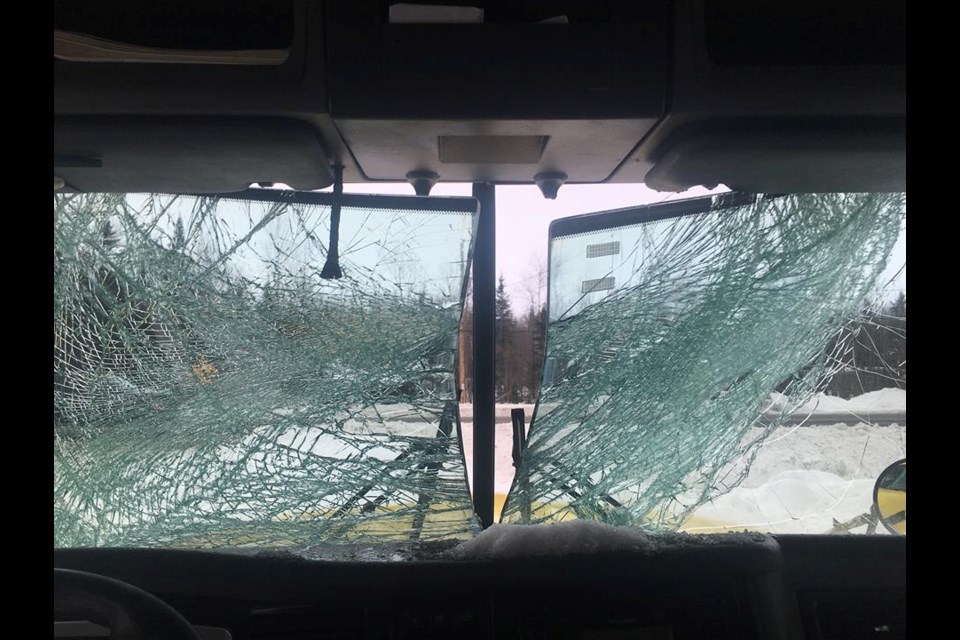OPP is reminding motorists to practice safe winter driving habits as snow, ice, and freezing temperatures will now becreating hazardous driving conditions.
You should completely clear the snow and ice off your vehicles to ensure visibility in all directions before heading out onto the roadway.
"A buildup of snow on your vehicle and/or a foggy or iced over windshield or windows can drastically reduce your visibility and cause a traffic hazard to other motorists," says Constable Phil Young. "The OPP reminds drivers that it is their responsibility to take the time to properly clean off their vehicles and ensure a clear view out of all the windows and windshield. The OPP may lay Highway Traffic Act charges if this is not completed."
Snow and ice on a vehicle's roof can prove to be a very real hazard. Just a couple of years ago a large sheet of ice from the roof of a vehicle smashed through the windshield of a North Bay man's truck.
The piece of ice, about 7ft x 2ft came off a cube van heading the opposite way, crashed into his windshield showering him in shattered glass.
"Luckily I was in a big heavy truck, not a car," Darren Culham said in a Facebook post."If this would have hit a car it would have been devastating to the people inside the vehicle and most likely have caused a major accident (heavy trafffic at the time)."
See: Ice from passing van smashes windshield of North Bay man
And: Carry a survival kit in your vehicle this winter advise police
All-wheel drive (AWD) vehicles help you accelerate, but not stop.
"On slippery surfaces, vehicles with four-wheel drive or AWD can accelerate better than those with two-wheel drive," adds Young. "However, when stopping or turning, the limits are determined by the traction capabilities of your tires, not the number of driven wheels. You should still adjust your driving to the conditions you're are facing, even if you're operating an AWD vehicle."
The number one cause of motor vehicle collisions during snowy conditions is speed. Driver's going too fast for road and weather conditions.



